Facilities
Soil-Plant-Atmosphere-Research (SPAR) Facility
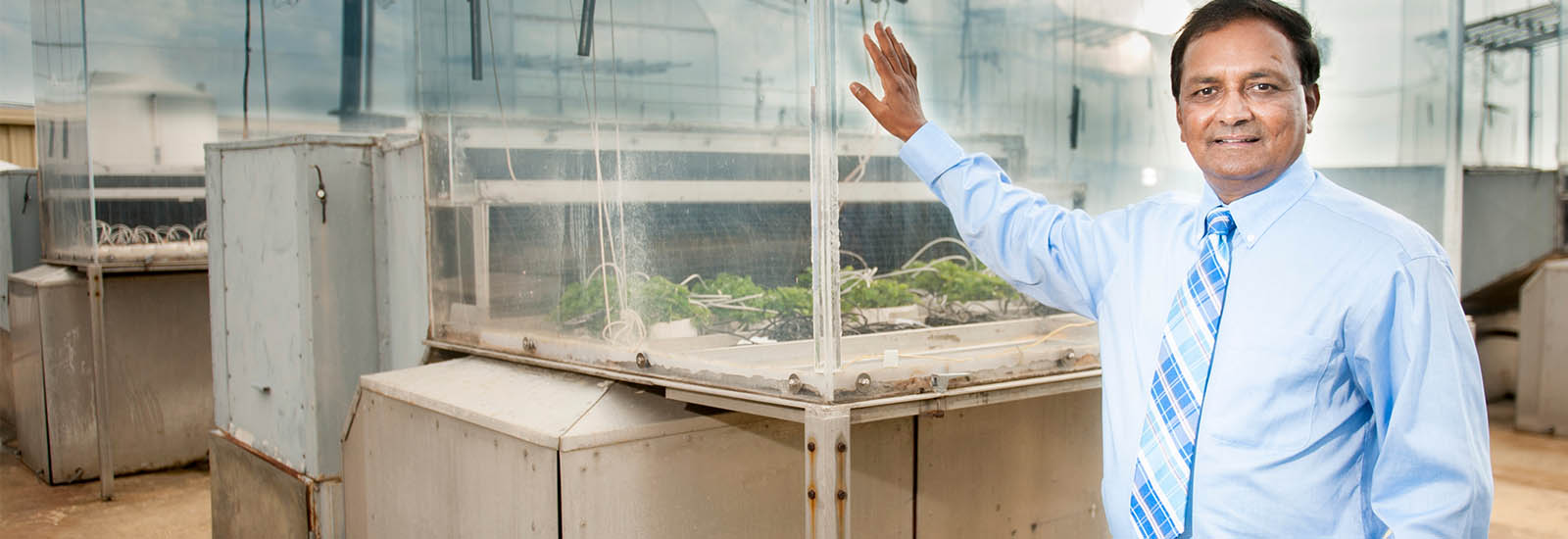
Overview:
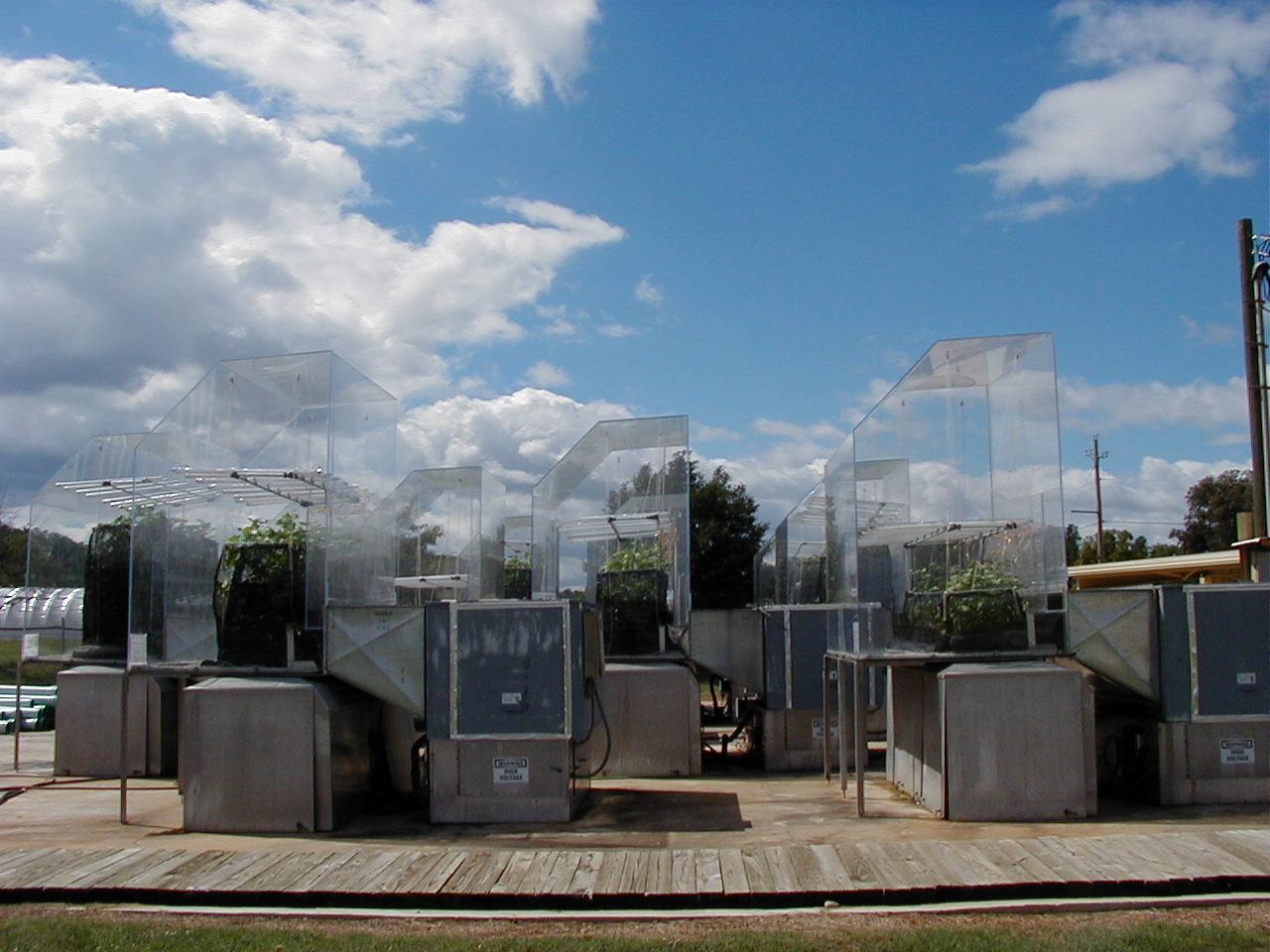 Figure 1
Figure 1
The Soil-Plant-Atmosphere-Research (SPAR) facility consisting of 10 naturally-lit chambers (Figure 1) located on the North Farm part of the Department of Plant and Soil Sciences, Mississippi State University. The mission of the facility is to provide process-level quantitative data that can be used to understand environmental control of plant growth and development and to quantify crop growth rates for simulation modeling.
The data acquisition and control system is composed of six Agilent 34970A data acquisition/Switch units, each with 60 channel measuring capacity (Figure 2) and a John Fluke Model 1120A digital input system connected via an IEEE-488 interface to a desktop computer used as the system controller. The components are networked to provide automatic acquisition of 500 pieces of information from the SPAR units, control of the SPAR environments, and storage of ollected data in an on-line data warehouse every 15 minutes, 24 hours a day, during the experimental period, using more than 200 sensors and instruments.
This system also provides for automatic error checking and preliminary analysis of collected data on a daily basis. These chambers are uniquely useful for studying canopy and ecosystem or small-plot responses to several combinations of variables in field-like controlled environments. These capacities allow simultaneous determination of several plant responses (e.g., canopy photosynthesis, respiration, transpiration, tissue temperatures, growth and development of organs) under precisely controlled conditions (e.g., temperatures from 10 to 45 °C, CO2 concentrations from 250 to 1000 ppm, ultraviolet-B radiation from 0 to several times of the ambient levels, ability to manipulate water supply and nutrient concentrations through a set of sensors and program algorithms). The gas-exchange processes and many soil and aerial environmental conditions are measured and/or adjusted on a 10-s basis in each SPAR unit.
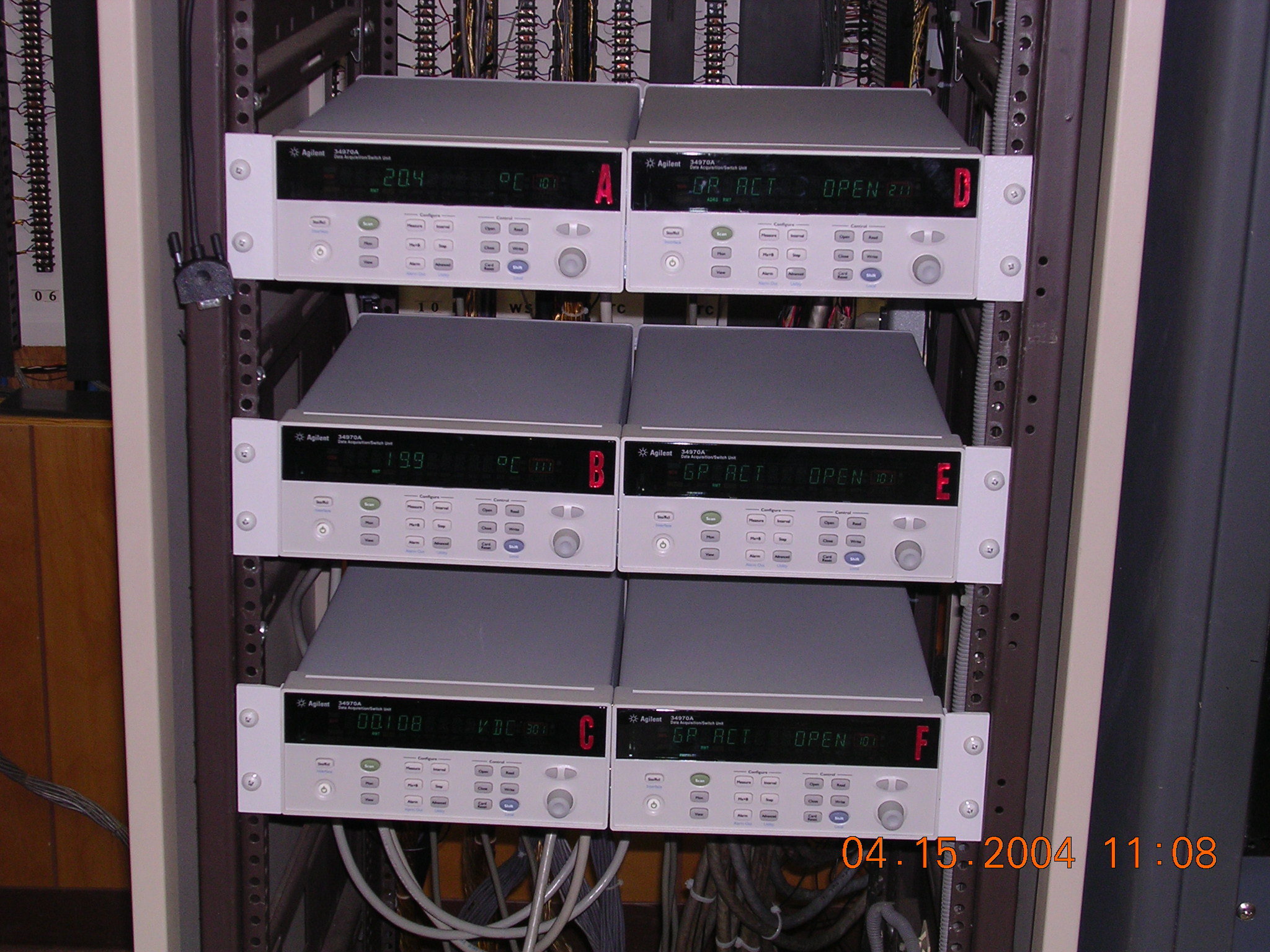 Figure 2
Figure 2
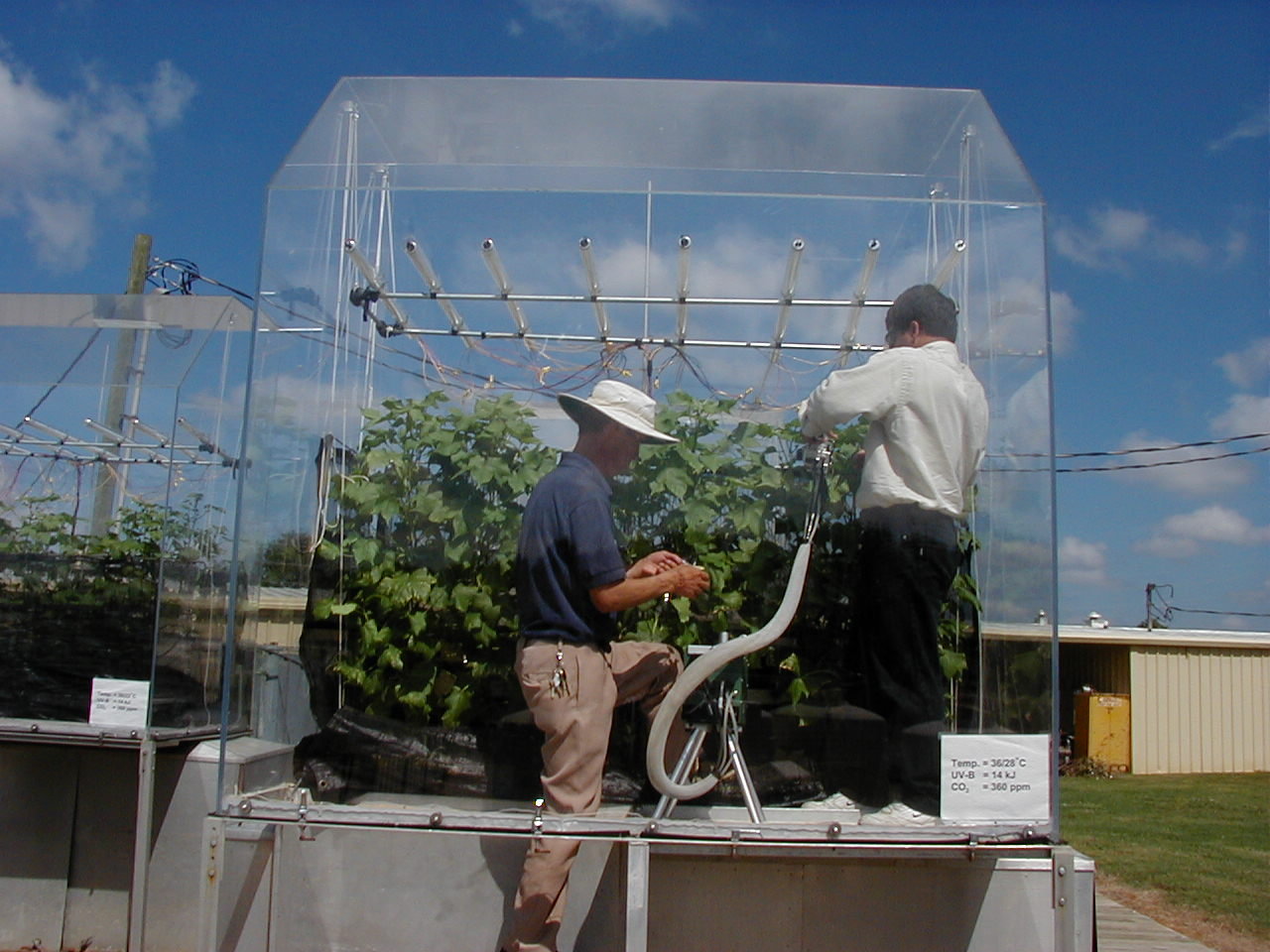 Figure 3
Figure 3
Also, the 1-m deep soil bin of the SPAR with rooting medium known as minirhizotron (Figure 3) provides an opportunity to study the root growth nondestructively during the experiment. This facility will also allow the study of several other biotic (e.g., weeds, insects, diseases) and physical environmental conditions. Recently, remote sensing techniques are being used at this facility to develop reflectance signatures and spectral algorithms for abiotic stresses The SPAR facility offers training experience for part-time students, undergraduate and graduate students, and post-doctoral scientists in whole plant and environmental plant physiology including global climate change effects. Tours are provided for schools and community groups as well.
Pot Cultures
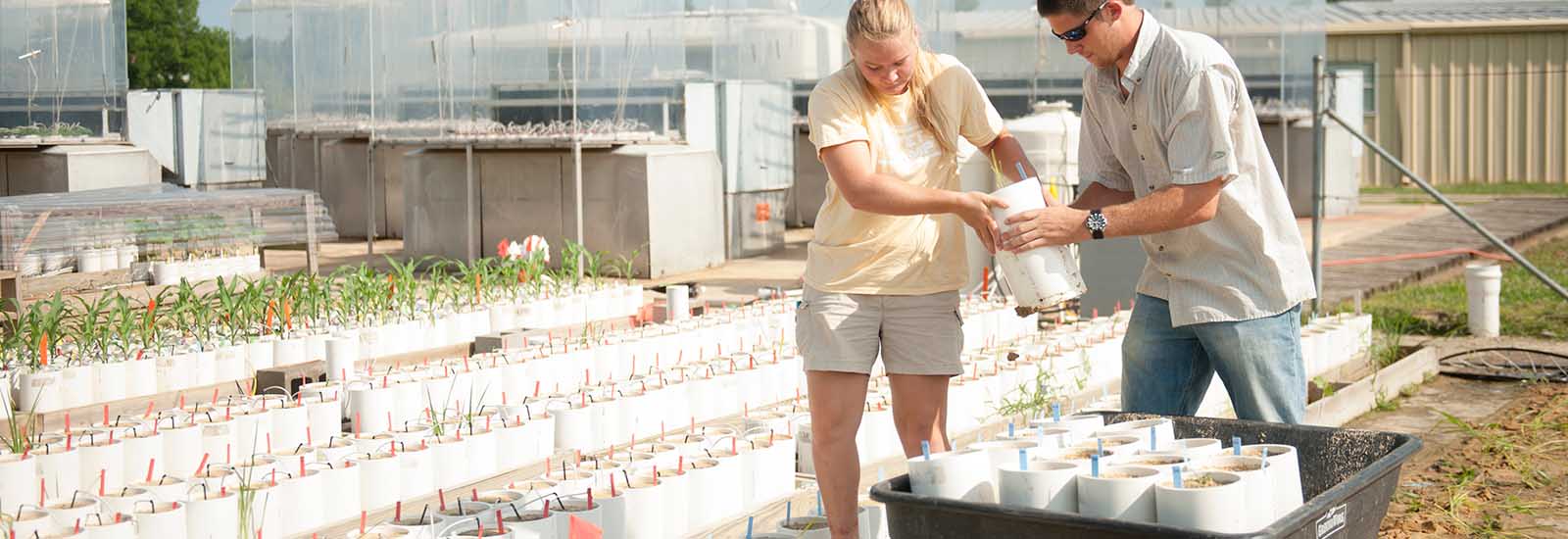
Overview:
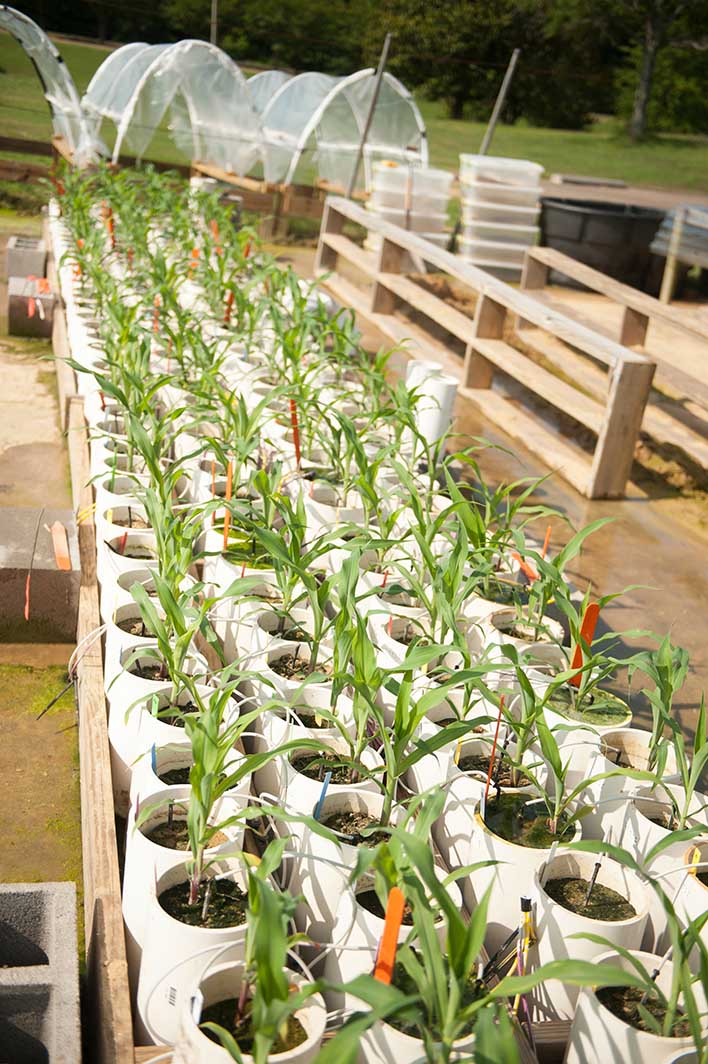 Figure 1
Figure 1
Current capacity is about 2000 pots (Figure 1). This pot-culture facility adjacent to SPAR units provide an unique opportunity to grow plants in natural environment, but with computer-controlled fertilization and irrigation capabilities to study nutrient, water deficit and other studies. By growing plants in the pot-culture nursery and by transferring the pots at specific growth stages into the SPAR facility will allow us to do certain experiments to answer specific questions which require precise control of the environments.
Individual plants can be grown in large, free-draining polyvinyl chloride (PVC) pots (15 cm diameter x 65 cm depth) filled with sand and supplied water and nutrients via plastic pipe and dripper system (Netafim, Fresno CA). The pots are normally in about 8-9-m long racks (or rows) spaced about 1 meter apart and arranged in east-west direction. The row spacing can be adjusted if needed depending on the experiment. All pots are normally irrigated three times per day in sufficient quantities to meet the plant's requirement with excess nutrients allowed to drain. For nutrient deficit studies, the nutrient solution can be varied using large (600 L) mixing tanks and pumping under pressure by chemical metering pumps through plastic lines to specific rows of plants. For water deficit studies, by adjusting the timing, the nutrient solution can be delivered to obtain desired water stress levels.
Field & Landscape
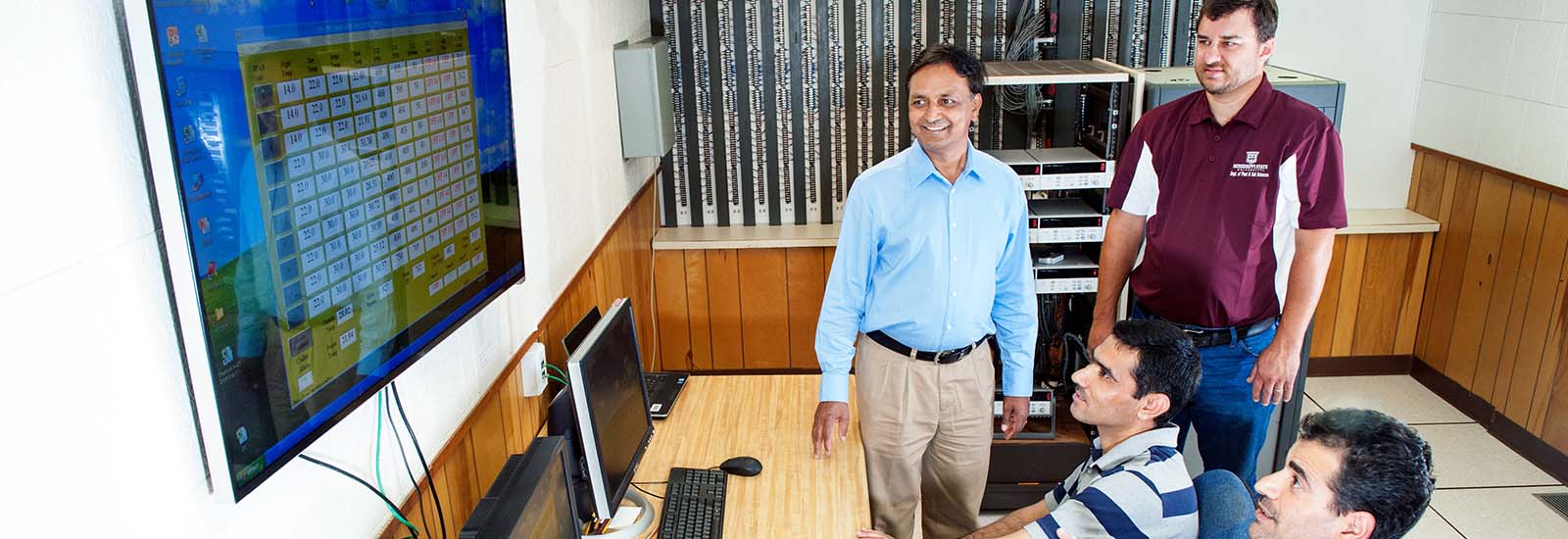
Overview:
Field experiments are being conducted to optimize production practices in major crops such as cotton, soybean etc. We also test and validate crop models for their accuracy in predicting crop responses to weather and management practices. We apply systems theory to complex agro-ecosystem problems. We use remote sensing; global climate models and crop simulation models to study various aspects of climate change such as improving crop management and assisting decision making process, predicting the consequences of climate change on crop production, and suggest alternative management and breeding strategies to cope with climate change.
